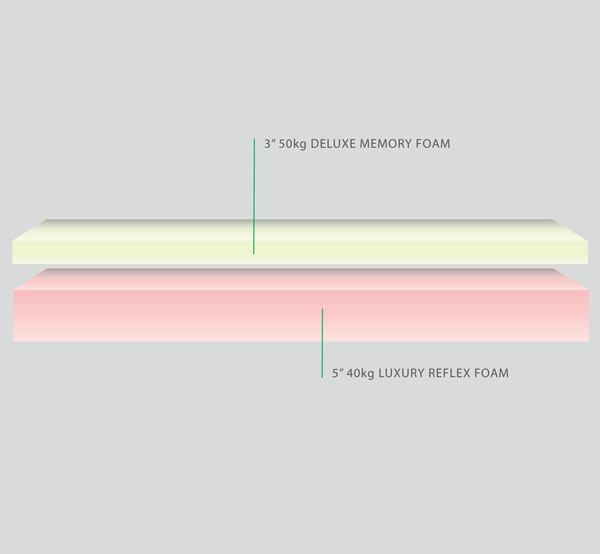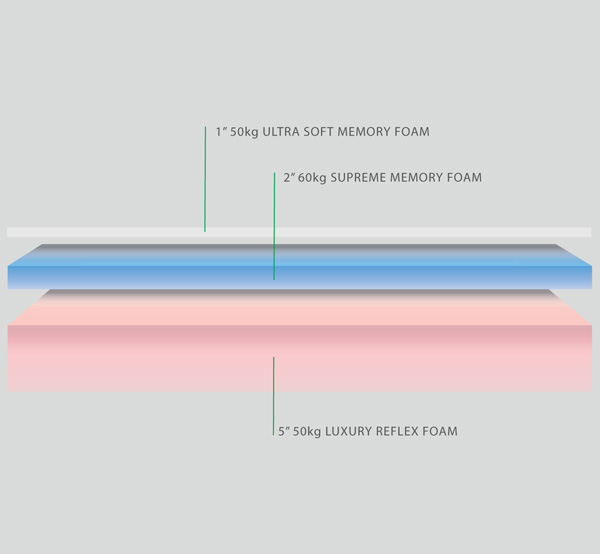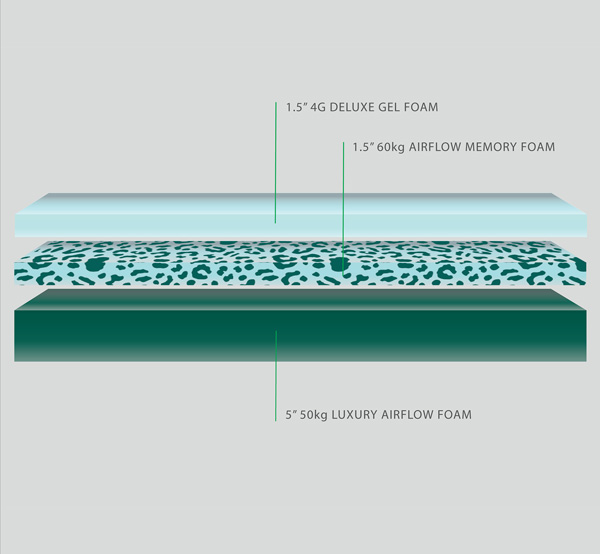Sweet dreams start withthe perfect mattress
Find the right BodyMould memory foam mattress for you
All our BodyMould memory foam mattresses have been developed to provide unrivalled quality and value for anyone who wants to sleep well. Whether you prefer to feel firmly supported or nestled in luxurious softness, we can make your bed a dream destination.
Everybody has different needs and sleeping styles, so one type of mattress will never suit all. We have three models in our range, offering a choice of comfort and support. We also make them to fit all standard UK beds, as well as EU/Ikea bed sizes.
Getting a good night’s sleep is important and it all comes down to your mattress. So, come and choose the best BodyMould memory foam mattress for you.

Deluxe Memory Foam Mattress
Our Deluxe memory foam mattress offers excellent comfort and support to leave you feeling fully rested and energised. It combines a supportive 5” base layer of luxury reflex foam and a 3” layer of our high density 50kg deluxe memory foam, giving the mattress a medium firm feel. This 3/5 ratio provides a blend of comfort and firmness which suits most body sizes and sleeping styles and is particularly suitable for people of average build.
The mattress comes with our washable CoolPlus cover, a five-year guarantee and free delivery.
Shop Now

Supreme Memory Foam Mattress
Our Supreme memory foam mattress is the pinnacle of luxury offering unrivalled comfort and support. This model has a three-layer construction. The base layer is 5” 50kg luxury reflex foam which provides superb spinal alignment. A central 2” layer highest grade 60kg supreme memory foam is topped with a 1” 50g layer of ultra soft memory foam for ultimate comfort.
With a medium to firm support level, it is perfect for couples and those of above average build. The Supreme comes with a luxury CoolPlus cover, an incredible ten-year guarantee and free delivery. We are confident no other mattress on the market can match it for comfort and price. So, if you want to invest in the very best for your well-being, this is the mattress for you.
Shop Now

Airflow Memory Foam Mattress
Our market-leading Airflow memory foam mattress utilises our latest advances in cool foam technology. Moisture and heat are dissipated away from your body at night and open cells prevent humidity building up. The increase in airflow is proven to be thirty times greater than other premium memory foam mattresses on the market.
The result is an ultra-comfortable, cooler sleep experience and the perfect option for you if you tend to get hot in the night. The exceptionally high-grade, high density memory foam gives the mattress a medium to soft feel, while the base layer will support every part of your body. The Airflow mattress comes with a CoolPlus washable cover, an incredible 10-year guarantee and free delivery.
Shop Now
Length x Width
Length x Width
